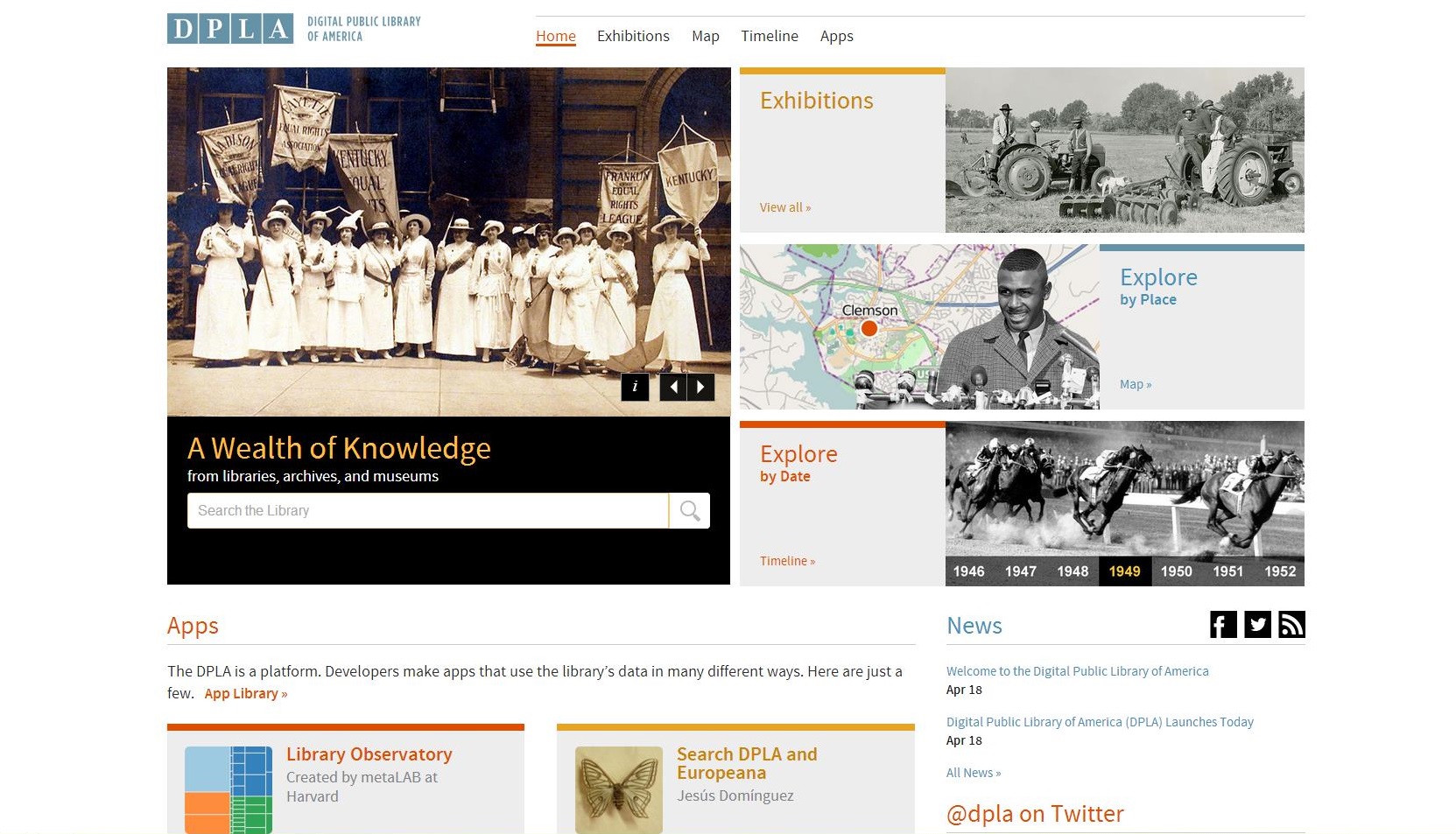The Digital Public Library of America Opens its Doors
The Digital Public Library of America, an ambitious, troubled effort to make the America’s entire literary heritage universally accessible, opened its doors today.

Visit the new library at its home at http://dp.la and you’ll find a fascinating and absorbing collection of digtal documents, but you’ll also quickly see that the project’s grand vision—to digitize America’s libraries and museums and make that vast corpus of knowledge accessible, searchable, and computable via the internet—is far from realized.
The complexity and difficulty of such an undertaking should not be underestimated, as our feature article “The Library of Utopia” by Nicholas Carr, published almost exactly a year ago, explains. The effort has been beset by legal, technical, and logistical difficulties from the outset. The biggest of all was the onerous nature of U.S. copyright law—an obstacle that, together with legal wrangling with publishers, torpedoed Google’s original Book Search project.
Nonethless, the website that went live today is still an important first step towards the DPLA’s utopian vision. The collection contains more than two million records from 14 institutions, among them Harvard University, New York Public Library, the Smithsonian Institution, and the Internet Archive. It also has some promising tools for sifting through the material. A visualization tool called Timeline shows the number of records for each year in the library’s collection; another called Library Observatory offers a treemap showing the amount, and types, of content in the DPLA from each contributing institution. More material will become accessible through the site in coming months, its custodian’s promise.
You can read another interesting account of project so far in the latest issue of the The New York Review of Books; in The National Digital Public Library is Launched!, the University Librarian at Harvard and the main man behind the project, Robert Darnton, describes the vision for the library in suitably historic language:
Jefferson and Franklin—the champion of the Library of Congress and the printer turned philosopher-statesman—shared a profound belief that the health of the Republic depended on the free flow of ideas. They knew that the diffusion of ideas depended on the printing press. Yet the technology of printing had hardly changed since the time of Gutenberg, and it was not powerful enough to spread the word throughout a society with a low rate of literacy and a high degree of poverty.
Thanks to the Internet and a pervasive if imperfect system of education, we now can realize the dream of Jefferson and Franklin.
The dream shard by Jefferson and Franklin, and kept alive by Darnton and others, hasn’t been realized quite yet. But the DPLA is a promising start.
Keep Reading
Most Popular
Large language models can do jaw-dropping things. But nobody knows exactly why.
And that's a problem. Figuring it out is one of the biggest scientific puzzles of our time and a crucial step towards controlling more powerful future models.
The problem with plug-in hybrids? Their drivers.
Plug-in hybrids are often sold as a transition to EVs, but new data from Europe shows we’re still underestimating the emissions they produce.
Google DeepMind’s new generative model makes Super Mario–like games from scratch
Genie learns how to control games by watching hours and hours of video. It could help train next-gen robots too.
How scientists traced a mysterious covid case back to six toilets
When wastewater surveillance turns into a hunt for a single infected individual, the ethics get tricky.
Stay connected
Get the latest updates from
MIT Technology Review
Discover special offers, top stories, upcoming events, and more.